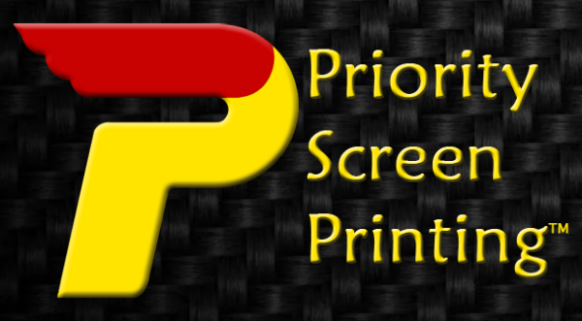Whether you’re here because you’re considering launching your own custom screen printing business, or simply want to make an informed decision when purchasing custom t-shirts, we’ve got the information you need here. In order make the best decisions with regard to print methods, it is important to have a good grasp of the differences between screen printing vs digital printing.
If you’re just starting out, looking to expand your business, or you just want to make the right ordering decision, knowing the characteristics of each method will help you decide what works best for your vision and budget.
In this article, we will break down each printing method and compare and contrast the differences between screen printing and digital printing.
What Is Screen Printing
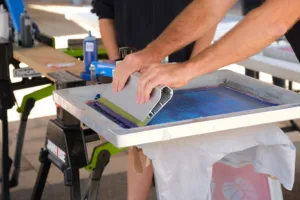
Screen printing (aka silkscreen printing) is a traditional method that has been used for decades and it involves applying ink through a stencil (the screen), which is pressed on the printed object, then dried by properly heating to get the design permanently adhered to the material (curing).
Screen printing is very versatile thanks to its direct and easy process that can be applied on a wide range of surfaces including glass, cardboard, plastic, fabric and paper to name a few. Different ink types and printing processes are available to suit the media being printed on.
Advantages of screen printing
The advantages of screen printing over other methods are numerous. The following reasons are just a few that make it clear why it’s the overall top choice for printing purists and those wanting prints that last.
Durability: Screen printing is known for vibrant and highly durable prints which endure the test of time and can withstand frequent wear, washing, and exposure to environmental elements. This makes it an ideal choice for items that necessitate extended use (i.e. work shirts).
Vibrant Colors: Screen printing excels at delivering colors that are both vibrant and long-lasting. This is ideal for designs that require enduring visual appeal.
Large Print Areas: Screen printing is ideal for designs that cover a substantial print area. Whether it’s a full front, back or side design it offers unmatched coverage. Digital printers (direct to garment) are typically small and as such, will limit the size of print on a garment. Screen printing allows for a much larger print surface as the screens can be larger than the shirt. This allows for printing to any portion, or all of the shirt.
Cost-Effective for Bulk Orders: When it comes to mass production, screen printing shines as a cost-effective choice. The economies of scale favor this method, making it a good option for businesses looking to produce large quantities of items.
Special Inks and Effects: Screen printing is versatile not only in terms of exact ink coloring such as Pantone colors, but also due to the access to specialty inks, such as metallic, puff, or glow-in-the-dark options, which enable creativity and printing designs that stand out.
What Is Digital Printing
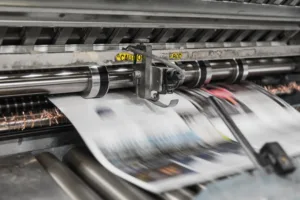
Digital printing is a modern printing method, which involves directly transforming digital images on a variety of material. Such process eliminates the use of the traditional method that relies on plates and setup.
Digital printing has gained popularity thanks to its high-resolution output and efficiency in diverse selection of applications including custom apparel, labels, packaging, signage and more.
Advantages of digital printing
Customization: Digital printing offers a high level of customization, enabling you to tailor each print to individual preferences. This is quite beneficial for marketing materials, personalized gifts, and unique, one-of-a-kind designs.
Quick Turnaround: This method allows for fast results while keeping the setup requirements at a minimum. It’s an excellent choice for quick printing, ensuring that it meets orders with tight deadlines.
Variable Data Printing: Digital printing is incredibly versatile. It allows you to add unique details to each print within the same print job. This is a game-changer for creating personalized direct mail, customized promotional materials, and tailored messages, making your prints more engaging and relevant to the recipient.
High-Resolution Output: If you are looking to reproduce high quality designs and fine details with outstanding precision and clarity, digital printing is the ideal choice. This is especially useful for art prints and photography that reflect razor sharp representation.
Versatility in Substrates: Digital printing is quite flexible when it comes to being applied on a vast array of surfaces which include paper, plastic and even unconventional materials like wood and metal. This opens up multiple possibilities for different marketing projects.
Screen printing vs. digital printing: Breaking down the differences
Now that you’ve gained a deeper understanding of the distinctions between screen printing vs digital printing, let’s explore the common ground they share and the unique strengths that set one method apart from the other.
To provide a clearer perspective, we’ve created a comparative table that assesses the performance of each method by comparison. This table offers insights into where these printing methods align and excel.
Characteristics | Screen Printing | Digital Printing |
Full Color Detail | ||
Color Matching | ||
Production Speed | ||
Versatility | ||
Design Complexity | ||
Durability |
Color Detail
Color detail is all about how well a printing method can reproduce intricate color patterns, gradients, and fine design elements. Whether your prints need vivid color gradations or intricate graphics, it’s essential to know how each method excels or falls short in reproducing these details.
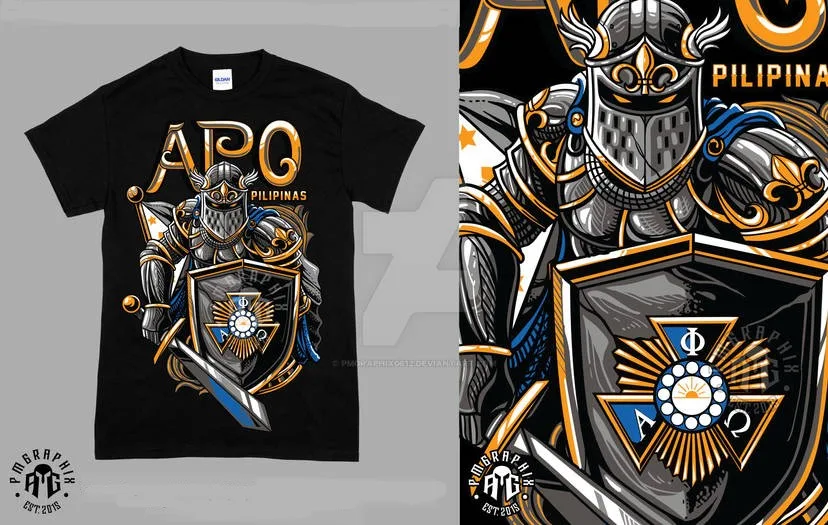
Screen Printing excels in solid and high-contrast colors. However, when it comes to intricate full color patterns, gradients, or fine design elements, screen printing can be challenging. It heavily relies on the thickness of ink layers to achieve the desired color intensity, which could potentially limit its ability to reproduce the image in the same detail.
On the other hand, digital printing stands out when it comes to intricate color details and gradients. It does this by employing a combination of minuscule ink droplets in order to create a wide spectrum of colors, allowing for high precision in color reproduction. This makes it an excellent choice for designs with fine details and complex color gradations.
Color Matching
In both screen printing and digital printing, the color matching process is of paramount importance. This process revolves around the precise reproduction of intended colors to match specific shades or hues.
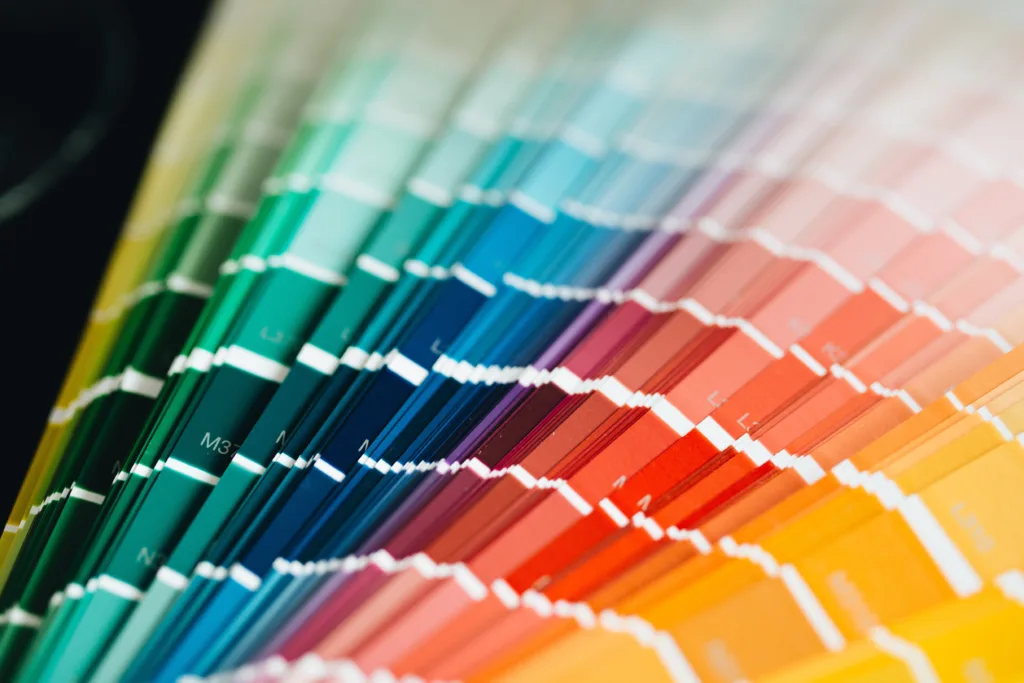
You will find screen printing an exceptional choice when it comes to color matching precision. This is especially true when working with Pantone or spot colors which can be easily matched without variation.
Screen printing has the ability to custom-mix inks to attain the exact shade required. Each color element in the design necessitates a separate screen, and meticulous alignment during the printing process. This is vital in upholding consistent color reproduction over time. For instance, if a brand insists on a specific corporate color for its promotional materials, screen printing is often the preferred choice to guarantee the precise replication of that color.
While digital printing does offer respectable color matching capabilities, it may demand careful calibration and rigorous color management to achieve the same degree of accuracy as screen printing, particularly when Pantone or spot colors are involved. It may not be as well-suited as screen printing for projects with stringent brand guidelines or intricate color prerequisites.
Production speed
When comparing screen printing vs digital printing in terms of production speed, digital printing excels at accomplishing the task faster for smaller print runs thanks to the versatility of the digital printing process. This comes at a disadvantage for pricing though as digital printing can cost more per print than screen printing.
Screen printing which usually involves longer duration of production due to setup processes such as creating screens for each color that demands alignment for each print. But, once the setup is complete, screen printing garments can be very inexpensive… especially when printing a larger number of items, as the setup cost can be spread across a greater number of items.
Versatility in screen printing vs digital printing
Versatility is an important factor when deciding on a printing method for your specific project. It matters when choosing from the different types of textiles and print locations.
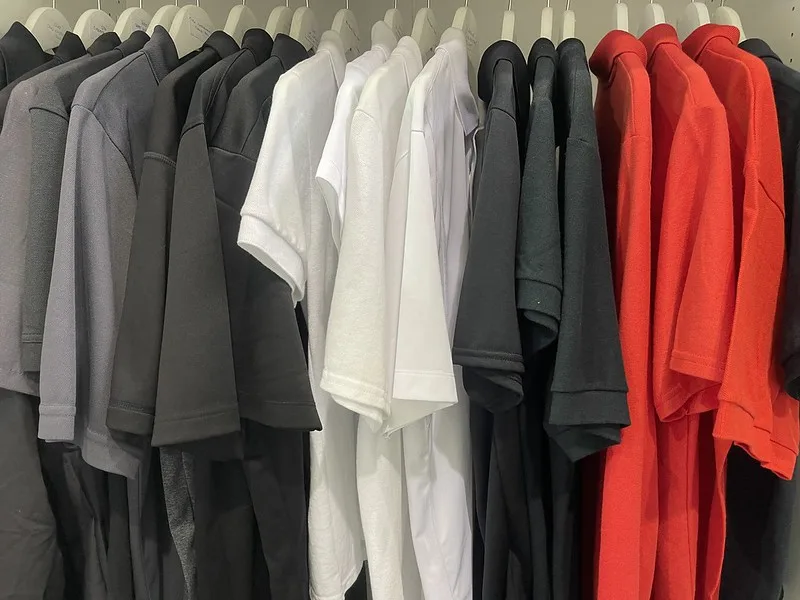
- Textiles and Apparel:
Screen printing is a top choice for textiles and apparel, making it ideal for large print runs on items like t-shirts, hoodies, sportswear and excels in providing vibrant, solid colors and is particularly suited for custom clothing.
- Promotional Products:
Screen printing is well-suited for promotional products, such as canvas tote bags, where durability and bold graphics are essential. It’s often preferred for items that require long-lasting and vivid prints.
- Flat Surfaces:
Screen printing is highly effective on flat surfaces like paper flyers and cardboard. It delivers high-quality prints on these materials, making it suitable for various marketing and promotional materials.
- Customized Textiles and Apparel:
Digital printing is a great choice for personalized or custom designs on textiles and apparel, including customized hoodies with intricate artwork. It provides the ability to reproduce fine details and gradients, making it ideal for short print runs with highly detailed designs.
- Paper-Based Materials:
Digital printing is perfect for materials like paper flyers and brochures. It excels in reproducing high-quality images, fine details, and complex graphics on paper and cardstock. If your peoject requires exceptional clarity and photorealistic prints then, digital printing is what suits you.
- Photographic Materials:
Digital printing is the preferred option for reproducing photorealistic images on materials like photo paper and canvas. It guarantees high-resolution output, which is perfect for art prints, photography reproductions, and fine art applications.
- Print location:
Unlike digital printing, which may have limitations in reaching specific print locations, screen printing offers more flexibility. With it, you can print on an unlimited number of locations on a garment. Locations where digital printing might have problems are pockets, sides, sleeves, neck tags to name a few.
Screen printing is the preferred choice when you need versatility in choosing print locations.
Design Complexity
Screen printing is ideal for simple and bold designs, particularly those with solid, high-contrast elements. It may not be the best choice for intricate and detailed full color designs that feature fine lines, gradients, or complex patterns.
Digital printing is the go-to method for complex and intricate artwork. It can capture intricate patterns, fine lines, and gradients with precision, making it an excellent choice for art prints, photorealistic designs, and projects that demand intricate design elements.
Durability
Screen printing produces prints that can withstand the test of time and endure wear and tear. Additionally, it fares better in the washing machine than digital prints. Longevity makes screen printing a top choice for items that require extended use. These clear benefits are especially apparent in custom clothing, outdoor signage, and promotional products.
Digital printing also offers good durability, though it may not match the abrasion resistance and long-term longevity of screen printing. Nonetheless, advancements in digital printing technologies are consistently improving its durability, expanding its applications across various industries.
What is The Best Method ?
The choice between screen printing vs digital printing ultimately comes down to preference and the specific demands of your project. Both methods have their strengths and areas of excellence. Screen printing shines when it comes to vibrant, solid colors, durability, and suitability for larger print runs. On the other hand, digital printing offers unparalleled versatility, precision in intricate designs, and a quick turnaround.
We hope our Screen Printing vs Digital Printing article was helpful in determining what will work best for you. Contact us if you’d like to discuss which option might be best for your custom prints.
